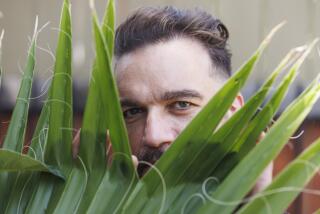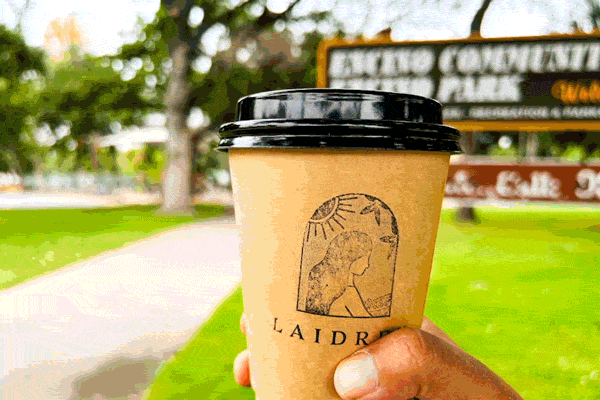Royal Parks of London
- Share via
LONDON — In a few hours, before dawn on an October day last year, southern England lost more than 20 million trees.
The unexpected and vicious winds were the worst in history. The devastation in parts of Hampshire, Surrey, Sussex, Kent and the London area was stunning. Centuries-old oaks, beeches, elms and chestnuts were snapped like pencils.
Many country roads were impassable for weeks. It will be years before all of the rural damage is cleared.
London’s magnificent parks took a beating, as did the city’s dozens of sylvan squares. Blessedly, many trees survived.
The royal parks are like choice pieces of countryside transplanted to the heart of the city--hundreds of acres of grass, trees and flowers. They have been called the essence of London.
Their origins date to when London was a scattering of villages.
Hyde Park was a dense forest when Henry VIII acquired it in 1536. The lusty monarch also walled in the marshlands of St. James’s Park, along with the much larger spread of what is now Regent’s Park, site of the celebrated London Zoo.
All these became hunting preserves for deer and wild boar. Succeeding monarchs enlarged and improved the properties, using them for game, jousting, partying and military exercises.
Royal Beneficence
These priceless lands still belong to the Crown, but are open to the public. The only charge levied is a small one for the optional use of canvas chairs.
Four of the five royal parks are loosely connected with one another in central London: St. James’s, Green, Hyde and Kensington Gardens, the latter two side by side and totaling more than 600 acres.
It’s possible to savor a country walk across miles of this tranquil beauty, encountering threats of traffic only twice, and briefly.
St. James’s is a starting point, smallest of the four and a jewel. A central pond hosts an astonishing variety of waterfowl, including pelicans with beaks longer than the height of most of their juvenile admirers.
Plump geese, Oriental ducks, darting coots and snooty swans enliven the scene. Thick willows weep into the water and copper beeches shelter picnickers and catnappers.
From a bridge there is a Canaletto-like view of the towers of Whitehall. Winston Churchill took solitary walks here, from his subterranean war rooms nearby, in the blackout of wartime nights.
The park fronts Buckingham Palace and is bordered by the Mall, the avenue where royalty rolls in carriages to coronations, baptisms and funerals.
Brown-Baggers at Noon
Green Park lies alongside the royal domicile. This is the simplest of the royal parks, with sweeps of greensward, proud old trees and bench-lined walks in all directions.
At noon it fills with brown-baggers from the Piccadilly and Mayfair environs, as well as foot-weary tourists. A weekend “art mart” along its fence is noteworthy more for people-watching than the quality of its wares.
Hyde Park nearly touches one corner of Green Park. This is the most famous of the royal enclaves. Its pond, the club-shaped Serpentine, is almost a mile long and is a haven for boaters, swimmers, fishermen and toe-dippers.
Its bridle path, Rotten Row, is like a mellowed painting of handsome horses being cantered under elegant trees. Elsewhere, Britons practice cricket and expatriate Americans toss footballs and baseballs.
There are recreational opportunities for everyone: play areas, kite-flying and Punch and Judy shows for kids; restaurants, exhibitions and gardens for adults, and the famed Speaker’s Corner for malcontents.
Curiously, even when host to thousands, Hyde Park remains a place where one can find seclusion amid countrylike space and grace.
Kensington, alongside, is separated only by a roadway. Kensington has fountains, a round pond, manicured gardens and a palace occupied by Prince Charles and his wife, Diana, and his aunt, Princess Margaret.
Albert Memorial
Here too is the delightful Peter Pan statue, and the arresting Albert Memorial, Queen Victoria’s extravagant monument to her consort.
In any of these spaces, sauntering and sitting seem the most popular occupations.
The splashes of flowers and plumage of birds vie with the colors of saris, Arab robes, African tribal dress and appliqued jeans of passers-by.
Sliding youngsters polish the massive bronzes of Henry Moore. Grandmotherly ladies exclaim over rose plantings labeled orange silk, iced singer and paprika.
Tweedy old gents study birds through binoculars, while younger chaps assess the human varieties. Frequently, band music drifts through the birches. Young and old lovers stroll along the lanes, sailors snatch an hour of urban voyaging.
Visitors and Londoners alike read, laze or jog under the venerable survivors of the big wind of 1987--many of which were mere saplings when deer roamed here.
But for their 1980s dress and the whisper of distant traffic on the breeze, the park-goers might all be occupants of a bucolic dream.
For more information, contact the British Tourist Authority, 350 S. Figueroa St., Los Angeles 90071, or call (213) 628-3525.
More to Read
Sign up for The Wild
We’ll help you find the best places to hike, bike and run, as well as the perfect silent spots for meditation and yoga.
You may occasionally receive promotional content from the Los Angeles Times.






